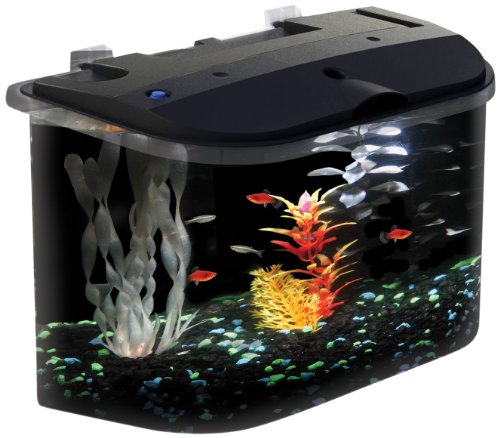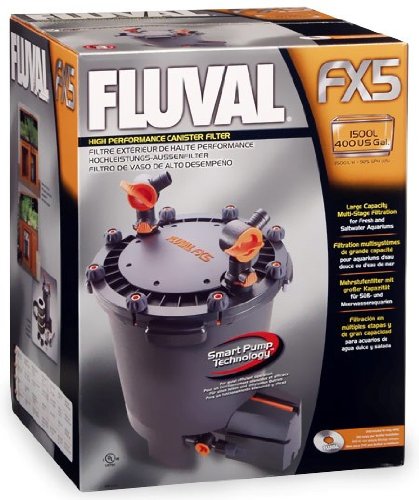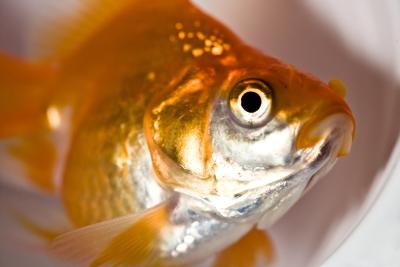
Rosy Barbs, known by scientists as Puntius Conchonius, are colorful, hardy, and relatively easy to breed. Note that in some older resources, Rosy Barbs are referred to as Barbus Conchonius. Rosy Barbs are known as a good beginners' fish because they aren't particularly fussy, and thrive well in a community tank as long as they are kept in a small school of 4 or more rather than as a single specimen. As the novice fish keeper becomes more experienced, they often desire to breed some of their fish. Many aquarists get their first experience breeding with guppies, swordtails, or one of the other live-bearing fish. Rosy Barbs are egg laying fish, and are a good choice for someone who is interested in breeding egg layers for the first time.
Set up a tank in which you will breed your Rosy Barbs. The breeding tank should be about a ten to fifteen gallon aquarium, but only fill it about half way. Use some of the water from your established community tank, and add some fresh water as well. Set the heater temperature to 80 to 82 degrees Fahrenheit. Be sure your heater is fully submersible (not the kind that hangs on the side) because the water level will be low. Set up a small sponge filter. If you do not have a sponge filter, you can use a small filter in the tank. Be sure to cover the intake of the filter with a small piece of pantyhose or other mesh to ensure it doesn ¢‚ €‚ ™t suck up the eggs or newly hatched fry.
Separate your male and female Rosy Barbs for about a week. If you only have the one extra tank, put the females in the breeding tank and leave the males in the community tank.
Prepare the tank for the spawning by placing a spawning mop or fine leafed aquarium plants in the two ends of the breeding tank. Leave the center area of the tank free.
Pick the fattest, healthiest female and put her into the breeding tank in the evening before the day you want the fish to spawn. If the females are already in the breeding tank, remove all but the fattest female. Choose the best colored, healthiest male and place him in the breeding tank with the female. If all goes well, the fish will spawn in the morning when the light hits the tank. The male will drive the female into the mops or plants at either end of the tank. There will be a lot of chasing and action in the tank. This will go on for a few hours. When the fish settle down, remove them from the spawning tank and return them to their home tank.
Allow the eggs about 48-72 hours to hatch. When the eggs first hatch, you will see the very tiny, clear baby fish hanging on the glass of the tank and on the plants or mops. During this time, they will feed from their attached yolk sack so they do not need to be fed yet. In a couple more days the fry will begin to swim and you need to begin feeding them. Feed them small amounts of very finely powdered flake food, or liquid fry food. Feed them several times a day.
Be sure to keep the floor of the tank clean of uneaten food and any other detritus. As the fry grow, let the size of the food grow with them. You can add new water to the tank a bit at a time as the fish grow to give the fry more room. Every couple of days you should change part of the water by siphoning a bit of it out (while you siphon out the uneaten food) and replace it with fresh water.
When the babies are large enough, you can put some back in your main community tank, give some to friends, and perhaps even sell them to a local fish store.
Now that you have had success with breeding Rosy Barbs you might be interested in trying your hand at some other egg laying fish. Any fishes that are considered egg scatterers breed in a similar way to the Rosy Barbs, but you often need to take in consideration specific details for the particular fish you are interested. By and large, you can use the techniques listed here to breed most of the Barbs.
 Setting Up a Fish Tank
You have finally purchased a
Setting Up a Fish Tank
You have finally purchased a
 Fluval Aquarium Filters
Fluval Fish Tank Filters for Your AquariumIn t
Fluval Aquarium Filters
Fluval Fish Tank Filters for Your AquariumIn t
 How to Painlessly Kill a Fish
How to Painlessly Kill a Fish
How to P
How to Painlessly Kill a Fish
How to Painlessly Kill a Fish
How to P
 What Fish Can Live in Brackish Water
What Fish Can Live in Brackish Water
W
What Fish Can Live in Brackish Water
What Fish Can Live in Brackish Water
W
 What Causes Fish to Die in a Pond?
What Causes Fish to Die in a Pond?
Wha
What Causes Fish to Die in a Pond?
What Causes Fish to Die in a Pond?
Wha
Copyright © 2005-2016 Pet Information All Rights Reserved
Contact us: www162date@outlook.com